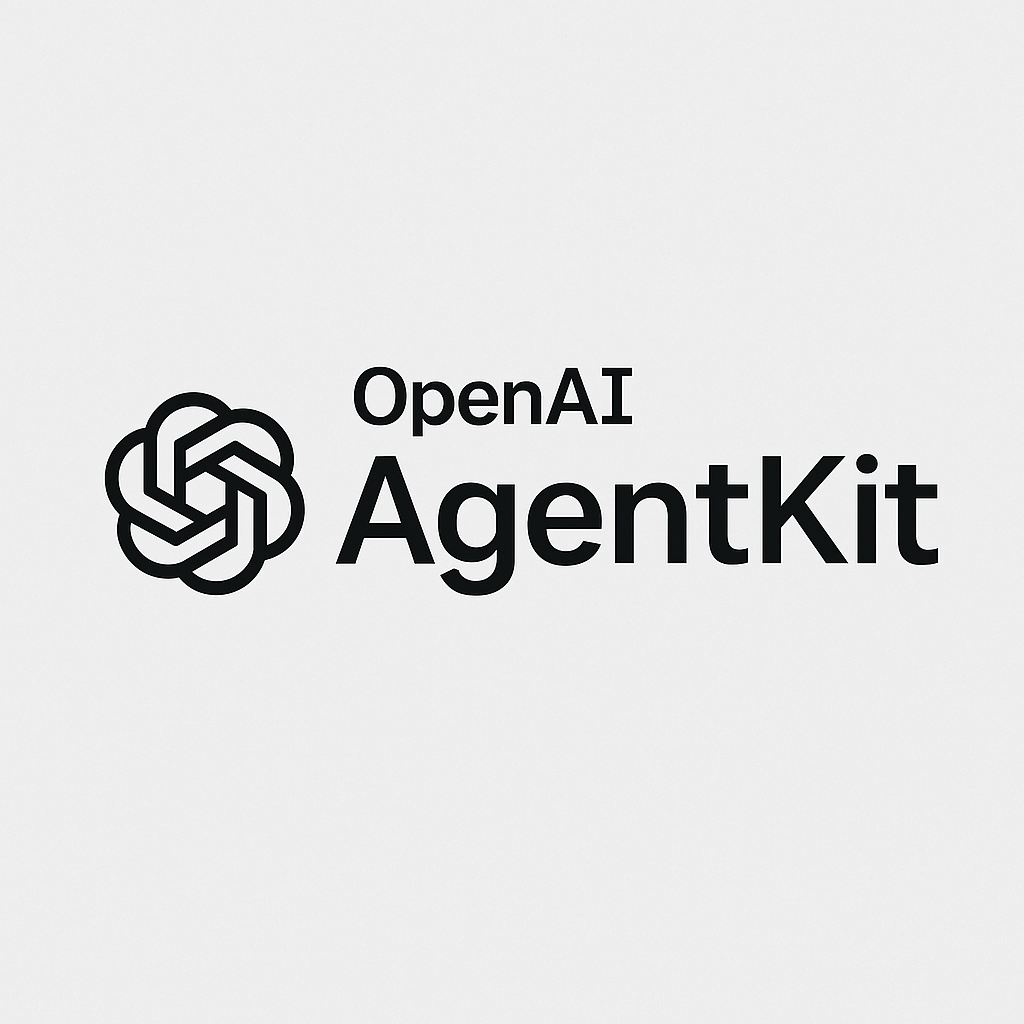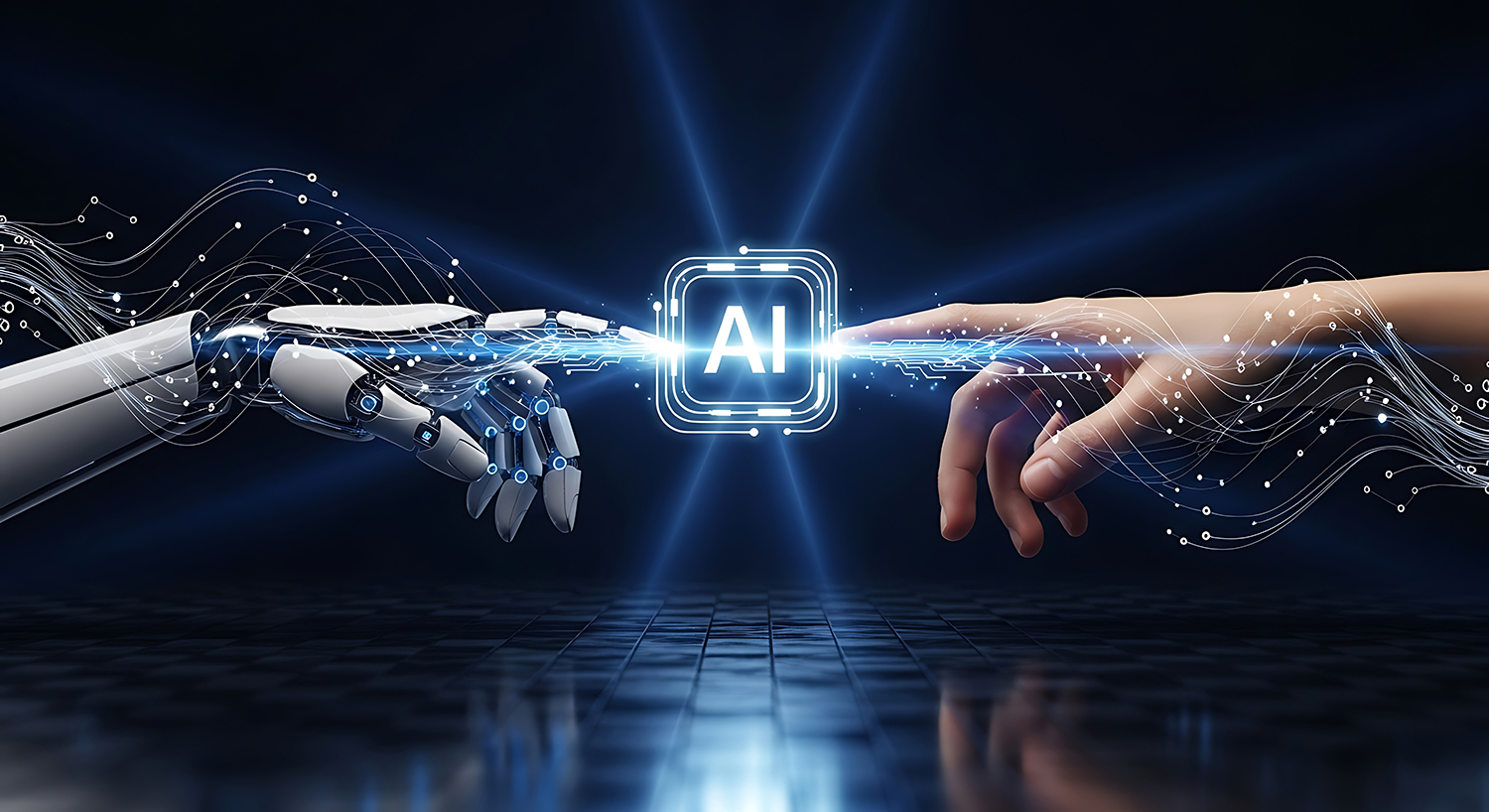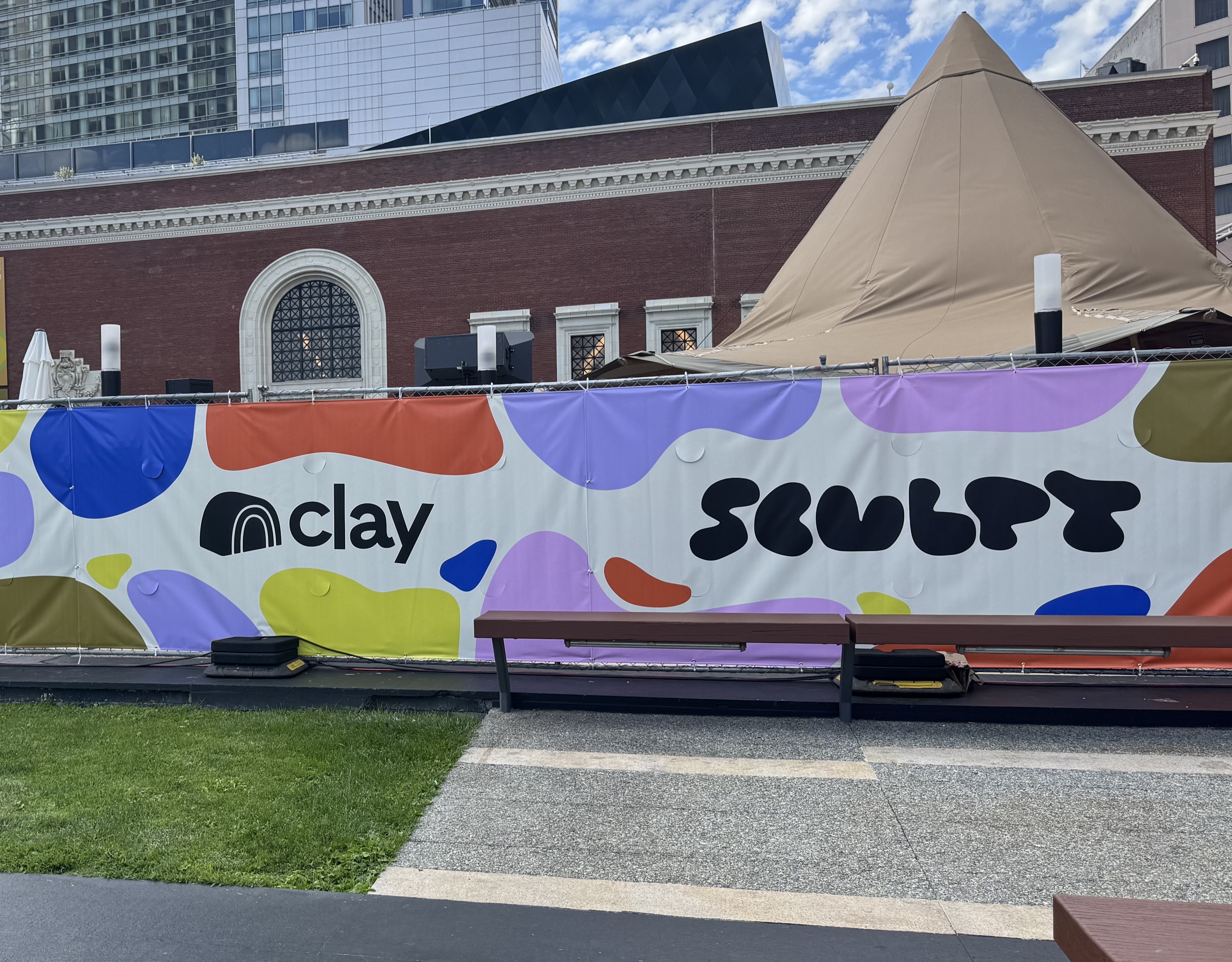AI Agents for B2B Marketing: Complete 2025 Guide
Discover how AI agents transform B2B marketing operations. Learn about 8 types of marketing AI agents, real implementation examples, and how to choose the right tools for your team.

Last Updated: October 2025
Key Takeaways
B2B marketing teams are replacing traditional automation with AI agents that autonomously make decisions. These agents analyze patterns, interpret context, and execute complex tasks without manual oversight, unless you build in human-in-the-loop controls. This guide breaks down what makes AI agents different from basic automation, which types actually matter for B2B, and how to get them running.
Quick Answer: AI agents for B2B marketing are software systems that perform marketing tasks on their own, learning from data to make decisions without needing step-by-step instructions. They spot patterns, adjust to what's happening, and run workflows across platforms while getting better over time.
What Are AI Agents for B2B Marketing?
AI agents are software that monitors defined data sources, executes logic-based decisions within set parameters, and automates marketing actions toward specified goals with minimal human intervention per task.
Traditional marketing automation follows rigid if-then sequences. Contact downloads ebook, receives email 1, waits three days, receives email 2. Same path regardless of behavior changes, external signals, or account context.
AI agents operate differently. They ingest multiple signals (ebook download, two pricing page visits, company size, industry, recent funding), apply decision logic based on historical performance data, determine optimal action (trigger demo invite, skip generic nurture sequence), execute automatically, then measure outcome to refine future decisions.
How AI Agents Actually Work
AI marketing agents operate on three components:
Triggers: Continuous monitoring of data streams (website activity, CRM updates, email engagement, social signals, intent data) for predefined meaningful events
Decision logic: Machine learning models or LLMs (GPT-4, Claude) process incoming signals against historical performance data and defined objectives to determine optimal next action
Execution: Automated actions across integrated platforms (CRM field updates, Slack notifications to sales, email copy generation, ad budget reallocation)
Difference from traditional automation: agents learn from performance patterns. When personalized subject lines drive higher open rates for enterprise contacts but lower rates for SMB contacts, the agent adjusts its approach automatically without manual rule changes or human intervention.
Why Traditional Marketing Automation Isn't Cutting It Anymore
You're probably already running marketing automation through HubSpot, Marketo, or something similar. These tools work fine for repetitive processes at scale. But they've got limits that cause friction for B2B marketing teams.
Everything's Stuck in Time
Traditional automation runs static playbooks. You build a nurture campaign in January. Three months later messaging evolved, product added features, buyer behavior shifted. Automation still executes January logic until manually updated.
AI agents monitor performance continuously, adjust autonomously within defined parameters. Email template click rates drop 40%, agent tests new variations without human input. Search patterns shift due to new competitor entering market, agent detects signal change and modifies messaging accordingly.
Context is King
Traditional automation applies uniform treatment to segments. Enterprise buyer, 10,000+ employees, downloads pricing guide, enters workflow A. Identical execution regardless of context.
Context gaps: new hire (started yesterday), researching for client (not internal use case), late-stage comparison shopping (visited three competitor sites first)
AI agents evaluate complete context before action. Person-level behavior patterns, company signals (hiring, funding, tech stack changes), engagement timing, intent strength, competitive research activity. Two contacts matching identical segment criteria receive different outreach because contextual analysis reveals distinct buying situations requiring separate approaches.
You Hit a Wall on How Much You Can Build
Most teams max out around 20-30 automation workflows before it gets too messy to manage. Each one needs design work, testing, watching, updating. Want to add more channels or use cases? More manual work.
AI agents scale differently. Once you set up the infrastructure and tell them what you're trying to do, they handle hundreds of tasks across dozens of channels without needing more people to watch them. One agent can track competitors, spot LinkedIn conversations, research prospects, write personalized outreach, and book meetings while your team works on strategy.
8 Types of AI Marketing Agents Every B2B Team Needs
Different marketing problems need different agents. Here's what matters most for B2B.
1. Competitive Intelligence Agents
These watch your competitors all the time. Website changes, new blog posts, pricing updates, who they're hiring, what they're posting on social, what their customers are saying in reviews.
When a competitor launches a feature that overlaps with what you're building, the agent tells your product marketing team right away. When they publish something targeting keywords you rank for, you get a ping with notes on their angle.
You typically connect the agent to web monitoring tools, point it at competitor domains, and set what counts as worth knowing about. Competitive intelligence automation can watch messaging changes across multiple competitors at once.
2. Lead Scoring and Enrichment Agents
Regular lead scoring is just math. Downloaded whitepaper, plus 10 points. Hit pricing page, plus 15 points. Get to 50 points, ping sales.
AI lead scoring looks at hundreds of signals together and figures out what actually predicts who buys from your specific business. They find patterns people miss, like certain LinkedIn activity combos that mean someone's ready to buy, or website visit patterns that signal high purchase chances.
These agents also fill in missing info automatically. New lead comes in with barely any details, the agent goes looking for company info, what they do, what tech they use, recent funding, relevant stuff like that, then updates your CRM.
3. Content Research and Brief Generation Agents
Content marketing means constant research. What's trending? What's your audience asking about? What hasn't been covered yet?
Research agents watch forums like Reddit, professional groups, support tickets, sales call notes, search trends. They spot content gaps and put together detailed briefs with target keywords, what competitors did, suggested outlines. Tools like Stat Finder can grab credible stats with proper citations.
When you need to write about something new, the agent already pulled together relevant data, expert takes, and what competitors are doing. Research drops from hours to minutes.
4. Personalization Agents
These customize messaging based on what's going on with each prospect. They look at company size, industry, tech stack, recent company news, job role, engagement history, then write personalized email copy, landing page versions, or ad creative.
One might notice a prospect works somewhere that just got funding, so it shifts outreach to talk about scaling problems instead of budget concerns. Or it sees someone checked out your Salesforce integration pages, so it emphasizes Salesforce compatibility in their next email.
5. Campaign Optimization Agents
Running paid campaigns means constantly watching and adjusting bids, who you're targeting, which ads work, where budget should go.
Campaign optimization agents make these moves automatically. They move budget from ads that aren't working to ones that are, try new audience groups, pause stuff that's missing targets, and scale what's winning. Pre-built campaign templates can speed up launching new marketing programs.
The agent might notice your ads work better on weekday mornings for enterprise segments but better evenings for small business owners, then change scheduling on its own. Or it spots certain job titles converting way more and automatically builds new audience segments for similar people.
6. Meeting and Demo Scheduling Agents
Setting up meetings means back-and-forth emails. They suggest times, you check your calendar, they can't do it, you suggest other options, they finally pick one, then someone needs to move it.
Scheduling agents handle all of that. They get natural language ("I'm free next Tuesday or Thursday afternoon"), check when you're available, suggest times, send confirmations, deal with rescheduling. They can also qualify leads before taking up sales time by asking questions first and routing based on answers.
7. Social Listening and Engagement Agents
Your ideal customers are talking about their problems on LinkedIn, Twitter, Reddit, and forums right now. Most companies miss these conversations because watching manually doesn't scale.
Social listening agents monitor thousands of conversations looking for relevant keywords, pain points, or questions. Someone posts "Does anyone have recommendations for B2B marketing automation that doesn't need a huge team?" and the agent flags it immediately. Reddit monitoring systems can surface real market signals from community discussions.
Better versions don't just alert you, they write suggested replies based on your positioning and what you offer. Your team reviews and posts, but the watching and drafting happens automatically. LinkedIn engagement agents can help founders and execs stay visible in conversations that matter.
8. Signal Detection and Routing Agents
Buying signals show up everywhere: website visits, email opens, content downloads, LinkedIn stuff, tech stack changes, funding news, job postings.
Signal detection agents watch all these places, find patterns that mean something, and route alerts to whoever should know. When a target account shows multiple buying signals fast, the agent tells the account owner what's happening and suggests what to do next.
AI Agent Strategy helps B2B teams get these types of agents running as part of their overall go-to-market.
How AI Agents Change B2B Marketing Operations
The impact goes past just automating individual tasks. AI agents change how marketing teams actually operate.
Always-On Instead of Campaign-Based
Traditional marketing runs in campaigns. You plan a launch, run it for a few weeks, check results, then plan the next one. There's downtime between campaigns and lag between when the market changes and when you respond.
AI agents make marketing always-on. They're constantly watching, engaging, and optimizing. A buying signal shows up, response happens right away instead of waiting for the next campaign. Market conditions shift, adaptation is automatic.
This doesn't mean people do less strategy work. It means they're not stuck in execution details and can focus on positioning, messaging, and market approach.
Real Individualization Instead of Segments
Marketing segmentation groups similar people: enterprise segment, mid-market segment, small business segment. Everyone in each bucket gets treated the same.
AI agents make genuine individualization possible. Every prospect can get messaging tailored to their specific situation, what's happening at their company, and their behavior patterns. The agent looks at hundreds of variables per person, which you can't do manually.
This level of personalization used to only work for key accounts with dedicated resources. AI agents make it economical for your entire addressable market.
Real-Time Response Instead of Delayed Insights
Traditional marketing analytics operate retrospectively. Run campaign, accumulate data over weeks, analyze in planning meetings, apply learnings to future campaigns. Feedback loop spans weeks to months.
AI agents operate on real-time feedback loops. Detect performance changes, adjust immediately, iterate continuously. Messaging angle performs Monday, scaled Tuesday. Channel performance degrades Wednesday, budget reallocated Thursday.
Competitive advantage: optimization velocity outpaces competitors operating on monthly or quarterly review cycles.
Real-World Examples: AI Agents in B2B Marketing
Here's what B2B companies are actually doing with marketing AI agents.
Example 1: Automated Competitor Content Monitoring
A B2B SaaS company in project management runs an AI agent that tracks competitor blog posts, product updates, and pricing changes. The agent watches 12 competitor websites, checking new content for topics, keywords, and positioning.
When a competitor publishes something on a topic the company ranks for, the agent sends an alert analyzing gaps in what the competitor covered. The content team uses this to update their own articles with stuff the competitor missed, keeping their ranking advantage.
The agent also watches product announcements. When competitors add features, it tells relevant people with context about what this means for competitive positioning.
Before this agent, competitive intelligence took a marketing coordinator 5-6 hours every week manually checking competitor sites. The agent handles it continuously and flags meaningful changes within hours.
Example 2: LinkedIn Engagement for Founder-Led Growth
A B2B cybersecurity startup built an AI agent that watches LinkedIn posts from target prospects and industry peers. The founder wants to engage with relevant conversations to build visibility, but tracking hundreds of connections manually isn't realistic.
The agent scans posts from the founder's network for topics about identity security, compliance, and related challenges. When it finds a relevant post, it writes a draft comment based on the company's perspective and what they offer. The founder reviews, edits if needed, and posts.
This lets them consistently engage with 30-40 relevant conversations weekly, compared to the 5-10 the founder could manage alone. Several inbound deals trace back to visibility built through this engagement.
Example 3: Intent Signal Aggregation
A marketing ops platform uses an AI agent to pull together buying signals from multiple data sources. The agent watches website behavior, email engagement, content downloads, LinkedIn activity, tech stack changes from data providers, and job postings at target accounts.
When a target account shows three or more big signals within two weeks, the agent creates a Slack alert for the account owner with full context. It also updates the account's status in CRM automatically and adds them to relevant nurture sequences.
Before this system, sales reps had to manually check multiple tools to understand what accounts were doing. Most signals got missed because checking everything daily wasn't realistic. The agent catches 70-80% more buying signals than manual monitoring found.
Example 4: Personalized Email Sequence Generation
A B2B demand generation agency built an AI agent that personalizes cold email sequences based on prospect research. When a new prospect gets added to Outreach, the agent researches their company, recent news, tech stack, and role, then writes a customized three-email sequence.
The agent pulls recent company funding announcements, finds technologies they use that work with the agency's client offerings, and mentions specific challenges common to their industry and company size. Each prospect gets messaging tailored to their context.
Cold email response rates went from 8% to 18% after implementing this. The agent generates 100-150 personalized sequences daily, which would need full-time staff to do manually.
Choosing the Right AI Marketing Agents for Your Team
You don't need every type of agent right away. Here's how to figure out what to prioritize.
Start with Your Biggest Time Sinks
Review last month's team calendar. Identify highest time-cost, lowest strategic-value recurring tasks. Competitive research? Lead qualification? Content ideation? Prospect outreach?
Highest volume, lowest judgment requirement = optimal automation target. Goal: free capacity for strategic work requiring human creativity and decision-making.
Implementation priority:
Team spends 10 hours weekly on competitor monitoring → deploy competitive intelligence agent first
SDRs spend 15 hours weekly qualifying inbound leads → deploy scoring and enrichment agent first
Match agent deployment to your specific time waste, not theoretical use cases.
Think About Your Data Situation
AI agents need decent data to work well. They need access to your CRM, marketing automation platform, website analytics, and relevant outside data sources.
If your data is clean, organized, and accessible through APIs, you can get sophisticated agents running quickly. If your CRM is a mess with duplicate records, missing info, and poor hygiene, you need to fix that foundation first.
Some agents care more about data quality than others. A simple alert-based agent watching your competitor's blog doesn't need perfect internal data. A personalization agent customizing messaging based on dozens of prospect attributes needs clean, complete data to work right.
Match Agents to How You Actually Sell
Product-led growth companies get the most from agents watching product usage signals and triggering actions based on user behavior. Sales-led companies get more value from agents spotting buying intent and routing leads to sales.
If you run account-based marketing programs, prioritize agents that pull together signals at the account level instead of individual contact level. If your strategy focuses on inbound content, agents that spot content gaps and research topics deliver better returns.
The right agent for your team depends on how you actually acquire and convert customers, not what seems coolest technologically.
Figure Out Build vs. Buy
You can build custom AI agents using workflow automation platforms like Relay.app, Make, or n8n combined with AI APIs from OpenAI, Anthropic, or Google. This gives you maximum flexibility and control.
Or you can buy purpose-built agent solutions from vendors focused on specific use cases like lead scoring, personalization, or competitive intelligence. These are faster to set up but less customizable.
Most teams end up mixing both. They use vendor solutions for common use cases where good products exist, and build custom agents for unique workflows or competitive advantages specific to them.
Building needs technical capability on your team or willingness to hire developers. Buying needs budget for software subscriptions but minimal technical skills. Pick based on your team's strengths and what you're working with.
Getting Started: Implementation Roadmap
Here's how to go from where you are now to having AI agents running across your marketing.
Phase 1: Foundation (Weeks 1-4)
Start by auditing your current marketing stack and data setup. Write down what systems you use, where data lives, and how systems currently connect.
Figure out your biggest opportunity based on time spent and strategic importance. This becomes your first agent use case.
Set up accounts with workflow automation platforms if you don't have them. Relay.app is easier for non-technical teams. Make has more complexity for advanced users. n8n works well if you want to host it yourself.
Get API access to your key marketing tools. Most platforms have APIs, but you might need to upgrade plans or ask your account manager.
Define success metrics for your first agent. What would make this valuable? Less time spent? More leads found? Higher conversion rates? Be specific.
Phase 2: First Agent Implementation (Weeks 5-8)
Build or set up your first agent focused on your priority use case. Start simple. A basic competitive monitoring agent that scrapes a competitor's blog and sends alerts is a good first project. Competitive LinkedIn monitoring is another straightforward starting point.
Test thoroughly before going live. Run the agent alongside your current process for at least a week. Make sure it's catching what it should without false positives.
Train relevant team members on how to interact with the agent, read outputs, and give feedback. The agent will need tuning based on real usage.
Document everything. What does this agent do? When does it run? What makes it take action? Who gets notifications? What should they do with the information?
Phase 3: Optimization and Expansion (Weeks 9-16)
Watch your first agent's performance against the success metrics you defined. Is it delivering what you expected? What's working? What needs adjustment?
Get feedback from everyone who interacts with the agent's outputs. Are the alerts useful? Is the information actionable? Are there false positives or missed signals?
Tune the agent based on this feedback. Adjust when it triggers, improve how it processes data, modify notification formats, or change action logic.
Once your first agent runs smoothly and delivers clear value, pick your second use case and do it again. Most teams can successfully deploy and optimize one new agent every 4-6 weeks.
Phase 4: Integration and Scaling (Month 5+)
As you get multiple agents running, look for ways to connect them. A competitive intelligence agent's outputs might feed into a content research agent's topic prioritization. A signal detection agent might trigger a personalization agent to customize outreach.
These connections create compounding value. The whole system gets smarter than any individual piece.
Think about bringing in specialized help at this stage. Consultants who focus on AI implementation for marketing can speed up progress and help you avoid common mistakes.
Build internal skills over time. Train team members on workflow automation, basic AI concepts, and agent design. This reduces dependency on outside help and lets you iterate faster.
When AI Agents Aren't the Right Solution
AI agents solve specific problems well, but they're not right for every marketing challenge.
If your marketing issue comes from unclear positioning, weak messaging, or poor product-market fit, AI agents won't fix it. They'll just amplify your gaps. Get your fundamentals right first.
If you're working with very small data sets, AI agents might not have enough information to learn patterns effectively. A company with 50 total customers doesn't have the data volume to train meaningful behavioral models.
If your marketing process is heavily relationship-driven with high-touch personal interactions, automation might damage what makes your approach work. AI agents work best for scalable, repeatable processes, not one-of-a-kind strategic relationships.
If your team lacks basic tech literacy or comfort with new tools, you'll struggle to implement and manage AI agents. Build foundational skills first, then add AI capabilities.
The goal isn't automating everything. It's automating the right things so your team can focus on work that needs human creativity, judgment, and relationship-building.
Ready to implement AI agents in your B2B marketing operations? AI Agent Strategy helps companies design and deploy agent-based systems that reduce manual work while improving results across demand generation, competitive intelligence, and account-based strategies.
Related Blogs Post

How to Build an AI Copilot for Demand Generation [2025 Guide]
Step-by-step guide to building an AI copilot for demand generation. Learn which platform to choose, how to set up integrations, and how to automate your demand gen workflow.

AI for B2B Sales Enablement: Complete Guide 2025
Learn how AI transforms B2B sales enablement with tools for call prep, competitive battle cards, and content creation. Includes implementation roadmap and ROI measurement framework.

How I Stopped Generating AI Slop by Training Claude with Custom Skills
Building reusable "skills" for Claude eliminates repetitive prompting by encoding your style guidelines and standards into instruction files that load automatically. This systematic approach delivers consistent outputs and competitive advantage while competitors waste time with generic prompts.

OpenAI's AgentKit Proves We're at the Railroad Moment for Software
OpenAI's AgentKit launch proves AI agents are disrupting SaaS. Learn how marketing myopia explains why traditional software companies must redefine their business models or face obsolescence.

OpenAI AgentKit Just Reset AI GTM
OpenAI's AgentKit announcement on October 6, 2025 changed the conversation from "Can AI improve GTM?" to "How fast can you ship production agents?"

From AI Tool Sprawl to Strategic Networks: A Schön-Inspired GTM Framework
Despite 70% AI adoption in GTM workflows, companies struggle with conversions. This framework shows how to move from isolated AI tools to interconnected systems that deliver measurable results.

Power Your AI GTM Strategy by Recording Customer Phone Calls
To build an effective AI-driven Go-To-Market (GTM) strategy, start by recording customer calls.

AI Agent Strategy: Your Guide to GTM Excellence
The go-to-market landscape has fundamentally shifted. Today's top-performing organizations are leveraging AI agents to create competitive advantages, achieving outcomes to impact time savings per rep, increasing account coverage, and pipeline.

Signal-Based GTM: Key Insights from Clay's Sculpt 2025 in San Francisco
The AI hype in sales is settling into practical results. Companies are saving reps 10+ hours per week, hitting 72% account coverage instead of 19%, and building entirely new roles to make it happen.



